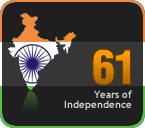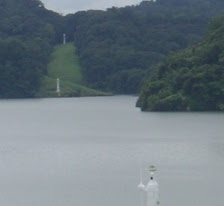
Location: Peru Coast - 13 07 S, 078 53 W
Today lets leave the mundane topics of the Sea & talk about interesting things such as Tectonic plate movements. The "Tectonic plate theory" is a generally well accepted theory these days. What that means, is that enough people oppose the theory so
that no one dares to call it the "Tectonic plate fact". :)
In basic terms what it implies is that the Earths core is made of molten magma & the continents are in effect floating pieces of solids. Much like wood floating on water. The Theory of Geostacy proposes that like the wood or ship floating on the water,
the continents float with respect to their weight. If you add more weight to them, they will sink & if you remove weight from them, they will rise. A great example of this are the poles. It is estimated that due to the melting of the Ice caps, so much
weight will be released from the landmass that the whole continent will life up by many centimeters. This is known as Geostacy. So if you thought that the rivers would eventually level the continents to the sea, you're mistaken. The continents will
simply rise up every time the river cuts it down.
Much like the floating pieces of wood in a pond, the tectonic plates are also in motion. And as these plates meet, some of the most exciting things in geology take place. The fact that these "most interesting things" take a million years to show any
effect at all, should not dissuade young readers from the inclination to take up geology.
There are two things that happen when the plates meet. Either they both buckle & go up & form mountains such as the Himalayas, or they go down. This is where we come to Chile & Peru. Out here, on the west coast of America, you have the two plates
moving towards each other and they actually go down. This is the reason why just about 30 miles of the coast of South america, you can find depths as much as 8000 meters. Practically speaking, its as close to a straight drop as can be found anywhere on
Earth. It also means that if you come to chile & drop your key on a fishing trip, you better break your hotel door.
But something interesting happens when these two plates go down. Subjected to the immense pressures as the they go down, they actually turn into magma (liquid rock) & then finding fissures in the South American continental crust, come up in huge
gushing volcanoes. This is the reason why just fifty miles inland on the west coast of South America you find great many mountains & active volcanoes.
I had taken the picture above standing on a sea side road close to a town called Vina Del Mar. You can see the mountains in the background which must be hardly 30 miles away. And thirty miles on the other side, you have some of the deepest parts of the
Oceans.
These are great areas to be around if you like these sorts of things. And if you keep dropping stuff all the time, then you're better off at home.
























